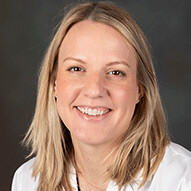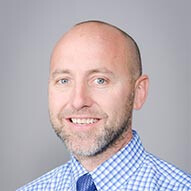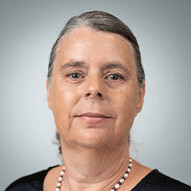Idiopathic adolescent scoliosis
Children diagnosed with scoliosis between the ages of 10 and 19, with no known cause, have idiopathic adolescent scoliosis (id·i·o·path·ic - ad·o·les·cent - sco·li·o·sis). At Children's Health℠, we can treat the vast majority of these cases without surgery.
What is idiopathic adolescent scoliosis?
Scoliosis is a condition where the spine curves to the left or right. When that curve appears between ages 11 and 18, it’s called idiopathic adolescent scoliosis (“idiopathic” means there is no medical explanation for what causes the condition). We can treat the vast majority of these cases without surgery.
What are the signs and symptoms of idiopathic adolescent scoliosis?
Most children with idiopathic adolescent scoliosis do not experience pain.
Their symptoms are usually limited to appearance, such as:
Leaning to one side
One hip that sits higher than the other
One shoulder that sits higher than the other
Ribs more prominent on one side (called a “rib hump”)
How is idiopathic adolescent scoliosis diagnosed?
When a child’s spine curves at an angle of 10 degrees or more, it’s considered scoliosis. Idiopathic adolescent scoliosis often appears during a child’s major growth spurt, around ages 12 or 13.
When kids come to us with symptoms of scoliosis, first we do a simple physical exam to see them bend and stretch their spine.
If we conclude they have scoliosis:
we’ll take an X-ray to get exact images of their spine and help us decide what kind of treatment they’ll need
we'll take X-rays periodically during your child’s treatment, so we use a machine that uses extra low doses of radiation
What are the causes of idiopathic adolescent scoliosis?
When conditions are “idiopathic,” it means we don't know what causes them. While scoliosis that impacts younger kids is typically caused by birth defects or other underlying conditions, scientists don't know what causes scoliosis in older kids and teenagers.
How is idiopathic adolescent scoliosis treated?
The angle of a spinal curve tends to increase until a child stops growing. If your child’s scoliosis remains moderate (a curve of less than 25 degrees) throughout their growth, it won’t affect their health and activity and we won’t need to treat them.
However, bigger curves (an angle greater than 60 degrees) usually keep growing into adulthood and can cause lung problems and other side effects. After we diagnose scoliosis, we measure the curve of a child’s spine every six to 12 months to see what kind of treatment they need.
Our treatment approach includes:
Monitoring - If your child has moderate scoliosis, we take periodic X-rays to see how much the curvature increases over time.
Bracing - When scoliosis is more pronounced, we work with a prosthetics company to create a custom brace for your child. The brace keeps your child’s spinal curve from getting worse as they grow.
Physical therapy (PT) - Our team includes staff trained in a special form of physical therapy for scoliosis patients called the Schroth Method. This method includes exercises to promote good posture and proper body mechanics, which help support and straighten the spine without surgery.
Surgery - We consider surgery when a child’s spine curves more than 40 degrees and we expect it to increase, because the child is still growing. But even in this case, surgery is not always necessary.
Idiopathic adolescent scoliosis doctors and providers
Our team specializes in children’s spinal issues and treatments, including doctors, nurses and physical therapists certified in the Schroth Method.
 Megan Johnson, MDPediatric Orthopedic Surgeon
Megan Johnson, MDPediatric Orthopedic Surgeon Christopher Redman, MDOrthopedic Sports Medicine Surgeon
Christopher Redman, MDOrthopedic Sports Medicine Surgeon Brian Gutknecht, PA-CPhysician Assistant - Orthopedics
Brian Gutknecht, PA-CPhysician Assistant - Orthopedics Linda Grande, APRN, PNP-PCNurse Practitioner - Orthopedics
Linda Grande, APRN, PNP-PCNurse Practitioner - Orthopedics Nathan Nolte, APRN, PNP-PCNurse Practitioner - Orthopedics
Nathan Nolte, APRN, PNP-PCNurse Practitioner - Orthopedics